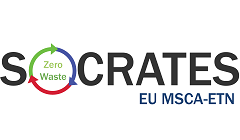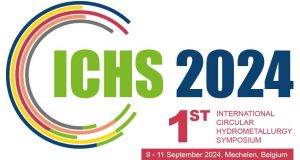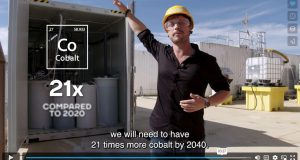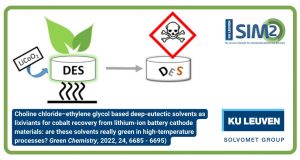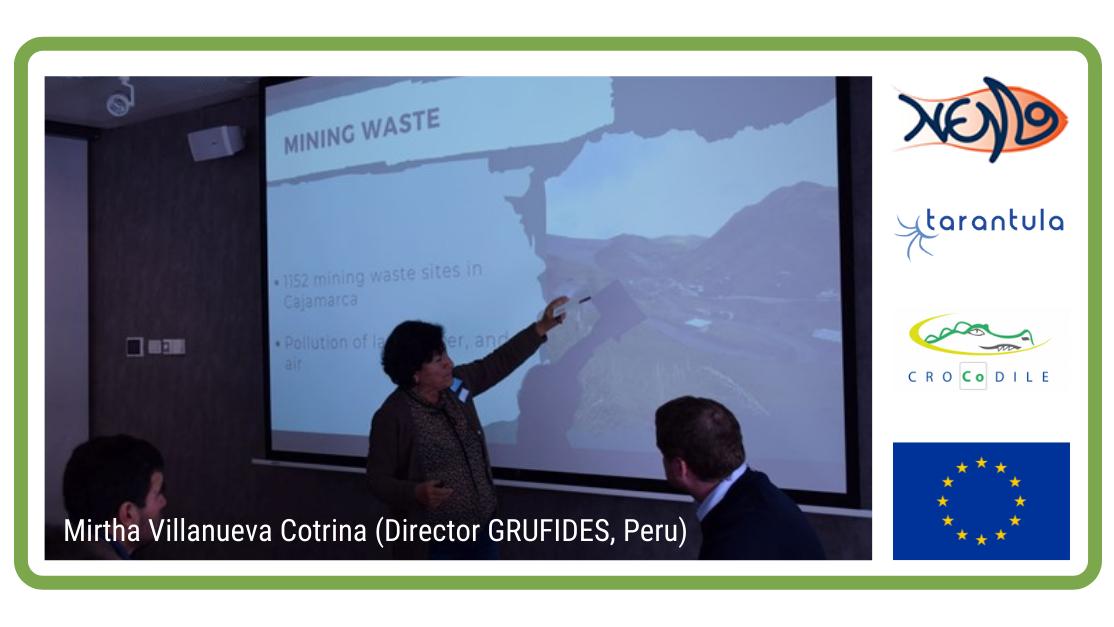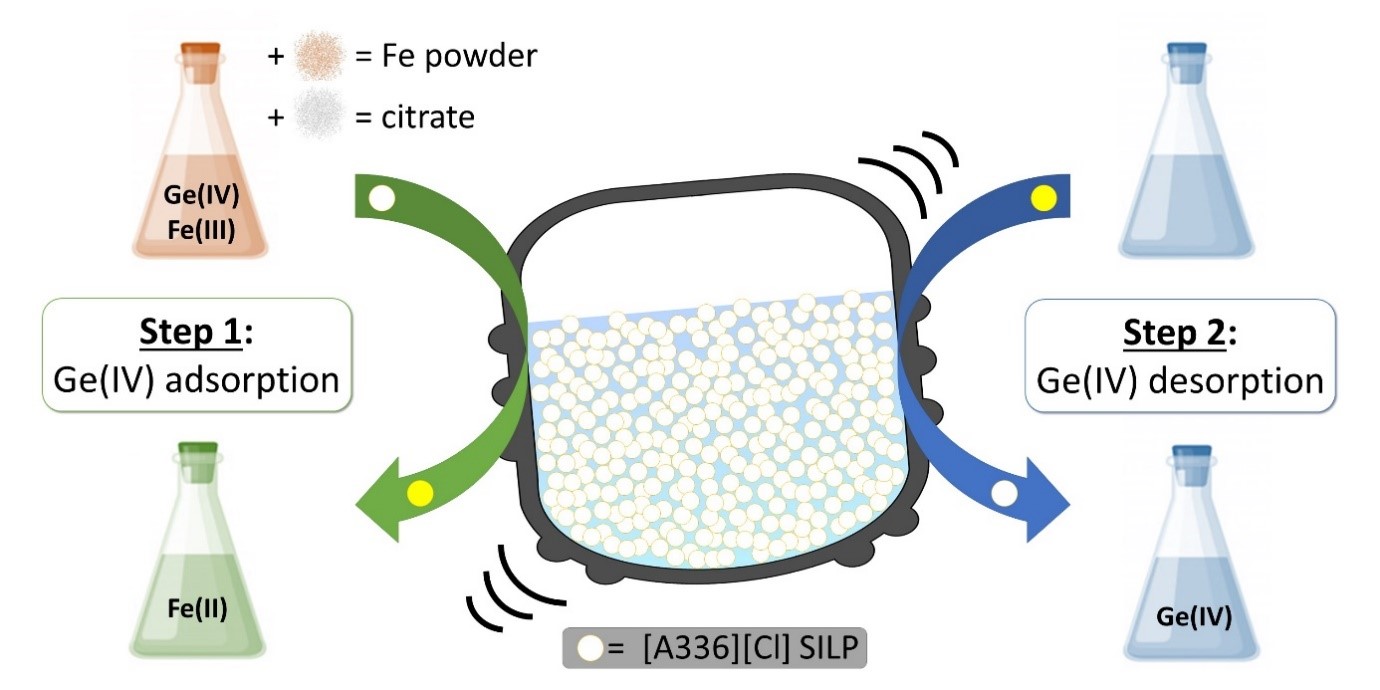
Summary
Germanium is a precious metal which is mainly used as a semiconductor in electronics and infrared optic industries, and as a polymerisation catalyst for the production of polyethylene terephthalate. Due to its high supply risk and its high economic importance, germanium is considered as one of Europe’s critical metals. The few minerals in which germanium exists as a main component (argyrodite, briartite, germanite, renierite and stottite) are extremely rare and do not form rich ore deposits. Therefore, germanium is mainly produced as a by-product of the zinc processing industry. On a global scale, only as little as 3% of all germanium obtained in zinc concentrates is recovered. To increase the resource efficiency, the recovery of germanium from secondary sources, such as goethite, should be further investigated.
Goethite is a by-product of the zinc processing industry and consists mainly of iron and zinc. Goethite also contains germanium, albeit only being present in very low concentration (ppm level). Therefore, much attention is paid to the separation of germanium from highly-concentrated contaminants, such as iron.
The technology used in this manuscript is the so-called supported ionic liquid phases (SILPs) technology. The SILPs technology, in which a thin ionic liquid layer is either covalently anchored or impregnated onto a (porous) solid support, is a technology which combines the advantages of both solvent extraction and adsorption chromatography. In this paper, it was studied on a multi-element solution resembling real leachate of a goethite residue. The high selectivity for germanium was obtained by selectively adsorbing germanium-citrate complexes to the Aliquat 336 layer of the SILP and stripping with a sulphuric acid solution. Germanium could be fully recovered and the SILP was reusable in multiple cycles without the need to regenerate it.
A proposed flowsheet for the selective recovery of germanium from an iron-rich matrix solution (goethite) using the Aliquat 336 SILP in batch-mode is shown below.
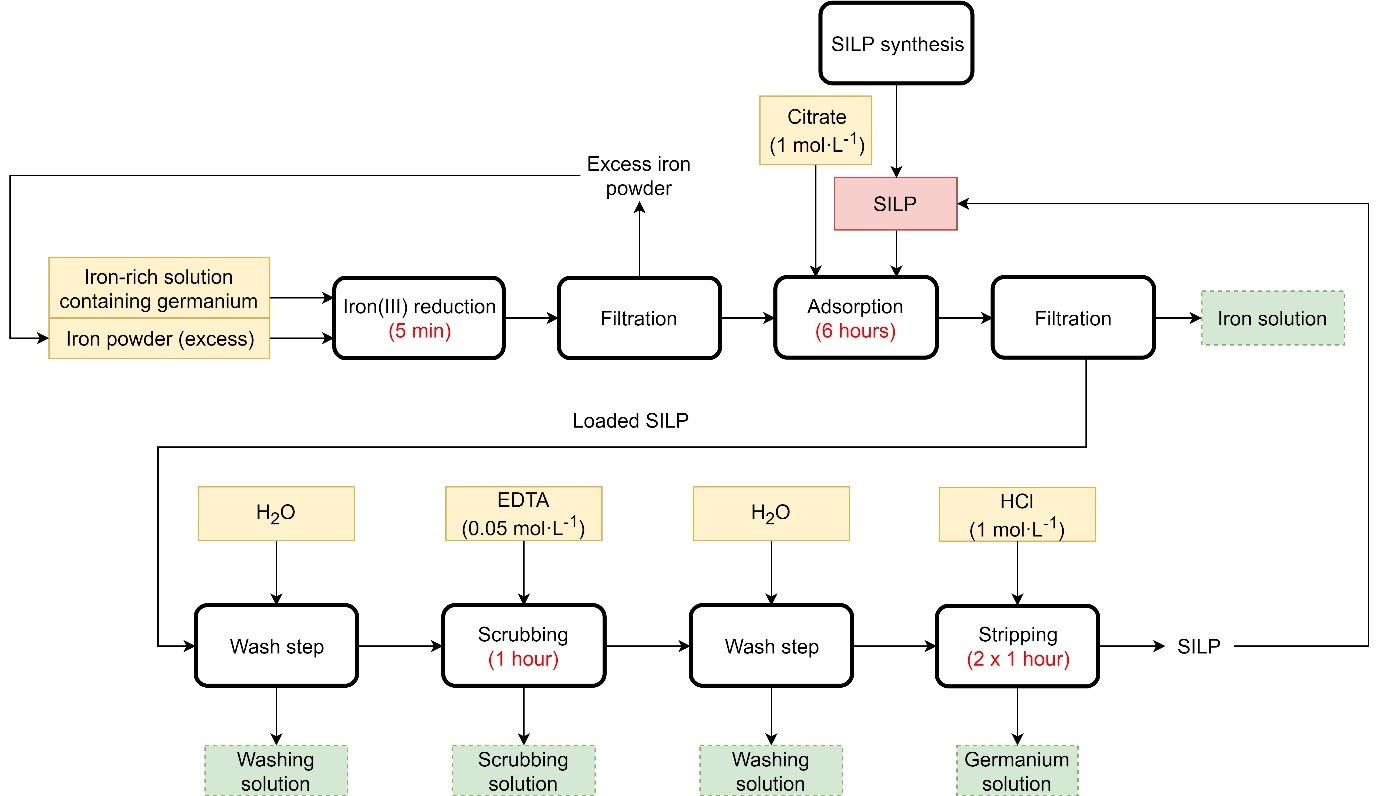
Full reference to the paper
Van Roosendael, S., Roosen, J., Banerjee, D., Binnemans, K. (2019). Selective recovery of germanium from iron-rich solutions using a supported ionic liquid phase (SILP). Separation and Purification Technology, 221, 83-92. DOI: 10.1016/j.seppur.2019.03.068
Biography Stijn Van Roosendael
Stijn Van Roosendael joined the group of prof. Binnemans in 2014 for his master thesis, investigating the recovery of scandium from bauxite residue leachates by adsorption on functionalized chitosan-silica hybrid materials. After obtaining his master’s degree, he began a PhD in collaboration with VITO, but was forced to stop his doctoral study one year later. Instead, prof. Binnemans offered him a position as a research associate to work on the European Horizon 2020 METGrow+ project, which was very closely related to his interests in recycling and the circular economy.
Acknowledgments
This work was supported by the European Union's Horizon 2020 research and innovation programme: Metal Recovery from Low-Grade Ores and Wastes Plus (METGrow+) [grant number 690088]. Project website: metgrowplus.eu.
Germanium is a precious metal which is mainly used as a semiconductor in electronics and infrared optic industries, and as a polymerisation catalyst for the production of polyethylene terephthalate. Due to its high supply risk and its high economic importance, germanium is considered as one of Europe’s critical metals.The work is published in Separation and Purification Technology. (SVR/PTJ, Leuven, 23/05/2019)
